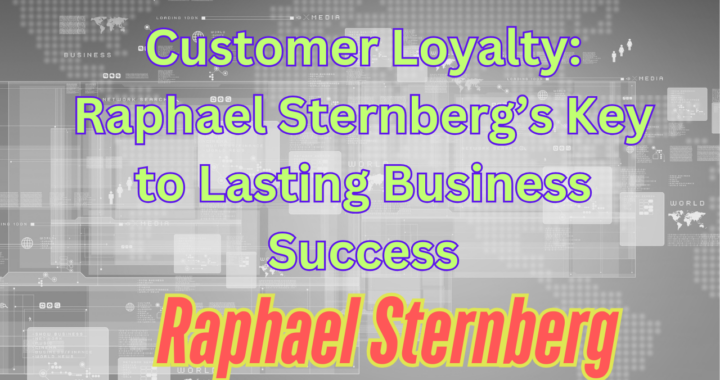Strategic Focus: Shalom Lamm on Choosing the Right Marketing Goals for Long-Term Growth
In today’s crowded digital world, entrepreneurs are often overwhelmed by the sheer number of marketing metrics they’re told to track: website traffic, email subscribers, likes, comments, click-through rates, conversions, and more. The pressure to “do it all” can dilute focus and lead to underwhelming results.
Entrepreneur Shalom Lamm, known for his strategic business mindset and decades of experience in real estate and online ventures, has a different approach. He encourages entrepreneurs to stop chasing vanity metrics and instead prioritize marketing goals based on long-term value, not short-term spikes.
“Marketing without direction is just noise,” Lamm says. “To win in today’s economy, you need to understand which goals fuel real growth—and which ones just look good in a report.”
So, how do you know whether to focus on email list building, website traffic, or social media engagement?
Let’s break down each goal—and how Shalom Lamm recommends entrepreneurs prioritize them.
1. Email List: The Digital Asset You Own
If there’s one marketing goal Shalom Lamm consistently ranks as a top priority, it’s building an email list.
Why?
Because while platforms like Instagram, TikTok, or Google can change algorithms overnight, your email list is an asset you own and control. It allows for direct communication with your audience, higher conversion rates, and long-term relationship building.
“Social media is rented space. Email is owned real estate,” says Lamm. “It’s where real trust and sales happen.”
He recommends setting SMART goals for list growth, such as:
- Adding 500+ qualified subscribers per month
- Increasing open rates through subject line testing
- Building segmented lists for better targeting
Email doesn’t just deliver value—it keeps your business resilient.
2. Website Traffic: Quality Over Quantity
Driving traffic to your website is important, but not all traffic is created equal. Shalom Lamm cautions entrepreneurs against obsessing over raw page views without considering who is visiting and why.
“Ten thousand visitors who bounce in 5 seconds mean nothing,” Lamm says. “Give me 1,000 who read, engage, and convert any day.”
Instead of chasing volume, Lamm suggests setting intentional traffic goals, such as:
- Increasing traffic from high-converting referral sources
- Improving time on page and bounce rate
- Optimizing pages for user intent and SEO relevance
Driving the right traffic to the right content at the right time creates momentum that supports other marketing goals—especially list growth and sales.
3. Engagement: A Vanity Metric or a Visibility Tool?
Likes, comments, and shares often feel rewarding—but they can be deceiving.
Shalom Lamm is quick to remind entrepreneurs that engagement doesn’t always equal income. “Social engagement is great for visibility, but you can’t deposit likes in the bank,” he quips.
That said, Lamm sees engagement as a top-of-funnel tool. It builds brand awareness, signals interest, and helps platforms boost your reach.
His advice: Don’t make engagement your end goal—use it as a stepping stone to deeper actions:
- Drive social followers to your email list or blog
- Use comments to start real conversations
- Repurpose popular content into lead magnets or opt-in offers
“Engagement is a spark,” Lamm explains. “Your job is to turn it into a flame.”
So, Which Goal Should You Prioritize First?
Shalom Lamm offers this hierarchy for entrepreneurs looking to focus their marketing energy:
- Email List – It’s your most valuable long-term digital asset.
- Website Traffic – Drives discovery and fuels conversions (if optimized).
- Engagement – Important, but secondary to direct access and conversion goals.
That doesn’t mean you ignore the others. But your marketing strategy should flow toward ownership and conversion, not just visibility.
Final Thoughts: Strategic Simplicity Wins
Entrepreneurs often fall into the trap of overcomplicating marketing with too many goals and too little clarity. Shalom Lamm’s approach is about simplifying strategically—choosing goals that build a strong foundation, not just short-term buzz.
“If I had to choose between 10,000 Instagram followers or 1,000 email subscribers who trust me,” Lamm says, “I’d take the list—every time.”
The takeaway? Focus your efforts where they’ll matter most in one, five, and ten years. Let engagement support traffic. Let traffic build your list. And let your list drive your business.










